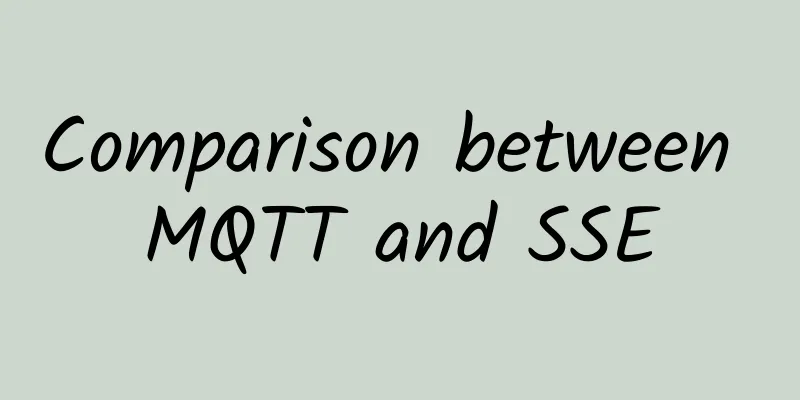The Internet of Identity is coming, and IAM will undergo a major change

|
What is the difference between the Internet of Identities and the Internet of Things? As the name implies, the Internet of Things is about things - devices, controllers, actuators, and so on. But these things will perform tasks, collect data, and connect to other devices. In other words, each device will have an identity with multiple attributes that must be well understood in order to drive good things to happen and prevent bad things from happening. Hence, the Internet of Identities. Today, as companies add tens of thousands of new devices to their internal and cloud-based networks, identity and access management (IAM) technology will also undergo a huge transformation. An enterprise's IAM infrastructure must be able to adapt to: 1. Large scale New IAM technologies will have to support millions of devices (and users), each with its own list of attributes. This is an N×N identity attribute matrix. Moreover, these users and devices may be temporary—appearing and disappearing as part of a business or execution process. Just auditing assets can be a time-consuming and labor-intensive task. 2. Privacy and security requirements Devices need to have hardened configurations, unique identities, multi-factor authentication, and secure communication between devices. This requires new policy engines and enforcement controls that are tightly integrated with existing network, cloud, and IAM infrastructure. 3. Continuous intelligent monitoring To maintain availability, performance, and security, the Internet of Identity requires constant monitoring. Given the rapidly growing scale, it can be said that humans alone cannot keep up with these activities. Therefore, the burden of keeping the Internet of Identity train running on time falls on the introduction of artificial intelligence and machine learning algorithms. The appropriate introduction of AI and machine learning can help automatically distinguish between normal behavior and abnormal activities and translate them into human-usable intelligence. Let's be honest: Microsoft may be a giant in the software industry, but its Active Directory (AD) is not enough to manage and maintain the Internet of Identities. As the Internet of Identity takes shape, several major shifts are likely to occur, such as: 1. Enterprises will centralize IAM management and procurement IAM has grown organically over the past few years and tends to be managed by a loose coupling of application developers, IT operations, and security personnel. As the Internet of Identity evolves, companies will realize that existing patchwork IAM deployments cannot address the scale of the Internet of Identity or drive new business processes. At that point, many companies will prioritize the next-generation identity infrastructure. Companies will also create the position of Chief Identity Officer - a senior person with the business and technical skills required to transform the company's identity infrastructure and shape the new IAM strategy. 2. Identity moves to the cloud The need for large-scale, continuous connectivity and processing power will drive large enterprises to embrace cloud-based IAM services. 3. Security is more important in IAM The survey shows that 66% of companies claim that their security teams' involvement in IAM policies, procedures and technologies has increased significantly or to some extent compared to two years ago. However, this is just the beginning. As the Internet of Identity becomes more established, CISOs will be closely involved in formulating and implementing identity strategies. The emphasis on data privacy will also increase significantly. The IT industry has been talking about identity-based computing and identity-based networking for several years, but it has been more of a vision than a reality. As the Internet of Identity evolves, the vision will eventually become a reality, ushering in a period of disruption, innovation, and transformation. When will it happen? We are on the highway entrance today, but the highway traffic is moving much faster than we think. In other words, the Internet of Identity and everything that comes with it is coming soon. |
<<: Choosing eMTC or NB-IoT should no longer be a problem
>>: As long as you are willing to find us to develop, you don't have to be exhausted.
Recommend
Foreign media: Global investment and deployment in 5G will accelerate in 2020
Foreign media reported that in 2020, global inves...
Wang Xiaochu: Prepare for 5G and avoid making the same mistakes as in the 4G era
Recently, Wang Xiaochu, Chairman and Chief Execut...
What is the first step that the Industrial Internet must take?
As we all know, Ethernet has become the most wide...
ColoCrossing: $12/year-1GB/20G SSD/1Gbps unlimited traffic/New York data center
ColoCrossing has released a new VPS promotional p...
EU plans to develop regulatory "blacklist" Facebook and Apple may be on the list
It is said that the EU's move is aimed at lim...
DiyVM: Hong Kong CN2 & Japan & US VPS, KVM architecture, 2G memory starting from 50 yuan/month
DiyVM is a Chinese hosting company founded in 200...
Serverless Engineering Practice | Getting Started with Knative Applications from Zero Foundation
Introduction to Knative Knative implements its Se...
The impact of drone technology and use cases
Before we dive into the ways drones can make the ...
Huawei Global Analyst Conference 2017: Using cloud as the engine to promote global digital transformation
[51CTO.com original article] Although the 2017 Hu...
Interviewer: Tell me how Nginx handles requests? Why doesn't Nginx use a multi-threaded model? What are the Nginx load balancing algorithms? What are forward and reverse proxies?
Interviewer: Can you tell me how Nginx handles re...
CloudCone New Year Promotion: $10.99/year KVM-512MB/20GB/2TB/Los Angeles Data Center
CloudCone has updated its 2023 promotional progra...
Borei Data reshapes APM and sets a new benchmark for IT operations and maintenance
With the rise of new-generation information techn...
Industrial IoT is so important to enterprises that future security is also a focus
Today, the use and growth of mobile technology ha...
Sharktech: High-security VPS with 10% off monthly payment and 50% off annual payment, $47.7/year - 2GB/40GB/4TB/Los Angeles and other data centers
Sharktech (also known as Shark Data Center, SK, e...
Operator workers: What are your plans after receiving your year-end bonus?
It’s the end of the year again. Regardless of whe...









